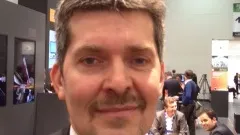
Asia set for gas engine plant boom as renewables get boost
In a first for Asia, Indonesia will install a110MW gas engine based power plant to provide grid stability and peak load power. This is the first time that a gas fired plant based on engines will be installed to meet daily power peaks in Indonesia, and it is a nascent market set to grow according to Wartsila Marketing Director Kenneth Engblom.
PT Perusahaan Listrik, the state-owned utility company, will utilize the new facility primarily to supply power during the evening peak load hours. It will be powered by eleven 20-cylinder Wärtsilä 34SG generator sets in V-configuration, operating on compressed natural gas and providing an output of 110 MW. Wärtsilä will also supply the necessary auxiliary equipment as well as building materials. Everything is being delivered on a fast-track basis, as the plant is scheduled to be built and fully operational before the end of 2012. Wärtsilä already has a strong presence in Indonesia, with some 2.8 GW of installed power in operation. These, and all Wärtsilä installations, are supported by the company’s global service network. Wärtsilä has service agreements for over 350 MW of power generating capacity in Indonesia.
Engblom told Asian Power Magazine that the need to provide grid stability by being able to quickly cycle up or down engines is important. “Gas fired engines are much more efficient at doing this than typical steam plants which are inefficient at smaller loads, and nuclear cannot do this at all,” he said. In Europe the move towards installing smaller gas engine utilities is being boosted by co-generation for industry and for grid stability by utilities who have to contend with wind and solar sources which can stop producing electricity as the weather changes. In Asia there is not yet the same demand for grid stability power plants, but this may change as weather dependent renewables such as solar and wind take a larger share of the generating market.
In other parts of Asia, gas engines can provide the necessary flexibility at peak times to utility operators. Engblom says that Wartsila has the most number of engines deployed in Asia, and is in a good position to meet utilities needs for flexible power. The problem of integrating renewables to the grid is a growing one in Europe but will eventually affect Asia too.
“With a lot of wind and solar power coming into the grid in Europe it causes a lot of regulation problems . Wind is not dispatchable; the wind blows when it wants to and suddenly stops. There is a need for a lot more quickly dispatachable power generation than before and it has to be very flexible and run for a while in the morning time when everyone uses a lot of electricity and during the day you have less demand and again in the evening you turn it up again. Existing base load combined cycle gas turbines or stem plants are not good at this. So our idea of smart power generation is that it needs to be operationally flexible – you can run it, and then stop it whenever you want. It needs to be efficient at any load as gas is expensive, so part load efficiency is important as well as in full load,” said Engblom.
“Specifically in China but also in other Asian countries they are putting in a lot of wind and solar and they will need a lot more flexible power generation in the near future. As this continues, utilities in Asia will soon realize they will have similar problems as we are now seeing in Europe today. Wartsila is here and eager to support the Utilities and Electricity regulators in this area”
Engblom said Wartsila is seeing more demand for larger combustion engine utility plants, and the largest they are building to date is a 430 MW plant for a mine site in the Dominican Republic which is based on their 22MW engine. “In Turkey we have a lot of plants that both serving the utility and industry sized from 50 to 250 MW so it is in that range.” Wartsila’s strength is that it has been manufacturing gas engines since 1993 and also offers dual fuel usage engines which are popular in Asia and other markets transferring from Liquid fuels to Gas. “These can run heavy oil or diesel for now and when the gas becomes available can easily be switched over,” added Engblom.
“Our R&D has focused on Gas and Dual Fuel technology for a very long time. To make an efficient engine is a sum of parts, trial and error and lots of running experience and compared to other engine manufacturers we are slightly more fuel efficient and the forerunners in operational flexibility. For the Fuel flexibility our dual fuel engine is also very popular. We were the first to the market with large gas engines and dual fuel engines so I think its fair to say we have the most experience.” Engblom said Wartsila was unique in that it could offer complete turn key solutions to utility operators, including full project management and EPC capabilities, and that the plant in Indonesia was a good demonstration of its capability in the Asian market.



















 Advertise
Advertise







